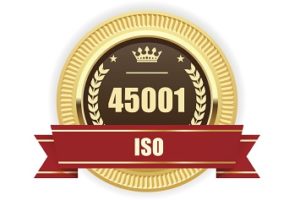The International Labour Organization says there are over 2.78 million work-related deaths worldwide each year. According to the U.S. Bureau of Labor Statistics (BLS), there were 5,190 on the job deaths in the United States in 2016—a 7% increase from 2015 and the highest since 2008. You may be in compliance with all applicable regulations, but are you successfully managing risk at your facility? There may be a better way on the near horizon. Let’s take a look.
Many organizations, especially in Europe and Asia, are moving to a management systems approach as a better way to manage overall organizational risk and achieve a measure of corporate social responsibility. The newest effort out of the International Organization for Standardization is ISO 45001—an occupational safety and health management standard. ISO 45001 is in the final approval stage and slated to be published in March 2018.
Moving Toward Harmonization
Beginning in 2012, the ISO undertook to harmonize much of the language and structure of its standards, using a new format. This project, called the “high-level structure” project (aka, Annex SL), makes it easier for an organization to implement multiple ISO standards because, for example, leadership recommendations are always found in Clause 5 of a given ISO standard, and common definitions. Both ISO 9001 (quality) and ISO 14001 (environment) were updated in 2015 and are aligned with ISO’s high-level structure.
ISO then decided to develop its own occupational health and safety (OH&S) management systems standard—ISO 45001.
What About OHSAS 18001?
Although not an ISO standard, Occupational Health & Safety Advisory Services (OHSAS) 18001, developed by the U.K.’s British Standards Institution (BSI) Group and first issued in 1999, is the internationally recognized assessment specification for OH&S management systems to enable a company to control its OH&S risks and improve its performance.
OHSAS 18001 was developed to be compatible with the ISO 9001 and ISO 14001 management systems standards in order to facilitate the integration of quality environmental and occupational health and safety management systems by organizations.
ISO 45001 will replace OHSAS 18001. Companies with OHSAS 18001 certification will have 3 years to migrate to ISO 45001.
An Expert Weighs In
The Advisor asked Chris J Ward, an author of OHSAS 18001 and contributor to the initial development of ISO 45001, some questions concerning the new standard. Here’s what Chris has to say.
Advisor: Even though OHSAS 18001 is not recognized as a standard by ISO, it is recognized by many international organizations, encompassing a variety of industries requiring their suppliers to be OHSAS-certified. Why is BSI interested in merging OHSAS 18001 with the ISO group of standards? Basically, what’s in it for you?
Chris: These standards are created by two entirely separate standards’ bodies. The International Standards Organisation produces standards which are developed by the national standards bodies of the world. Whereas BSI produce British standards. OHSAS 18001 is a therefore a British standard, which because of its value has become popular around the world.
Advisor: What is the primary driver for ISO 45001? Is it mainly to make OHSAS 18001 align with the “high-level structure” project launched in 2012 to harmonize the language and structure of the ISO standards?
Chris: ISO 45001 is a natural successor to 18001, a fact recognised by the National Standards’ Bodies in 2013 when they came together to begin the project. Annex SL, the high-level structure gave some impetus and certainly provided the framework for negotiations and development.
Check tomorrow’s Advisor for more of Chris Ward’s insight to ISO 45001, especially how it could benefit U.S. companies.
 Chris J Ward, CMIOSH, is an ISO 45001 specialist and an author and lead auditor for OHSAS 18001. He was a principal inspector with U.K.’s Health and Safety Executive (HSE) for 36 years and has experience with a wide range of manufacturing and service sectors. Chris is the author of HSE’s audit tool for inspection of health and safety management used by HSE and local authority inspectors in the U.K. He continues to investigate fatal accidents around the world in the heavy manufacturing and construction sectors. Chris can be reached at chrisjward@iso45001assessment.com. Chris J Ward, CMIOSH, is an ISO 45001 specialist and an author and lead auditor for OHSAS 18001. He was a principal inspector with U.K.’s Health and Safety Executive (HSE) for 36 years and has experience with a wide range of manufacturing and service sectors. Chris is the author of HSE’s audit tool for inspection of health and safety management used by HSE and local authority inspectors in the U.K. He continues to investigate fatal accidents around the world in the heavy manufacturing and construction sectors. Chris can be reached at chrisjward@iso45001assessment.com. |

